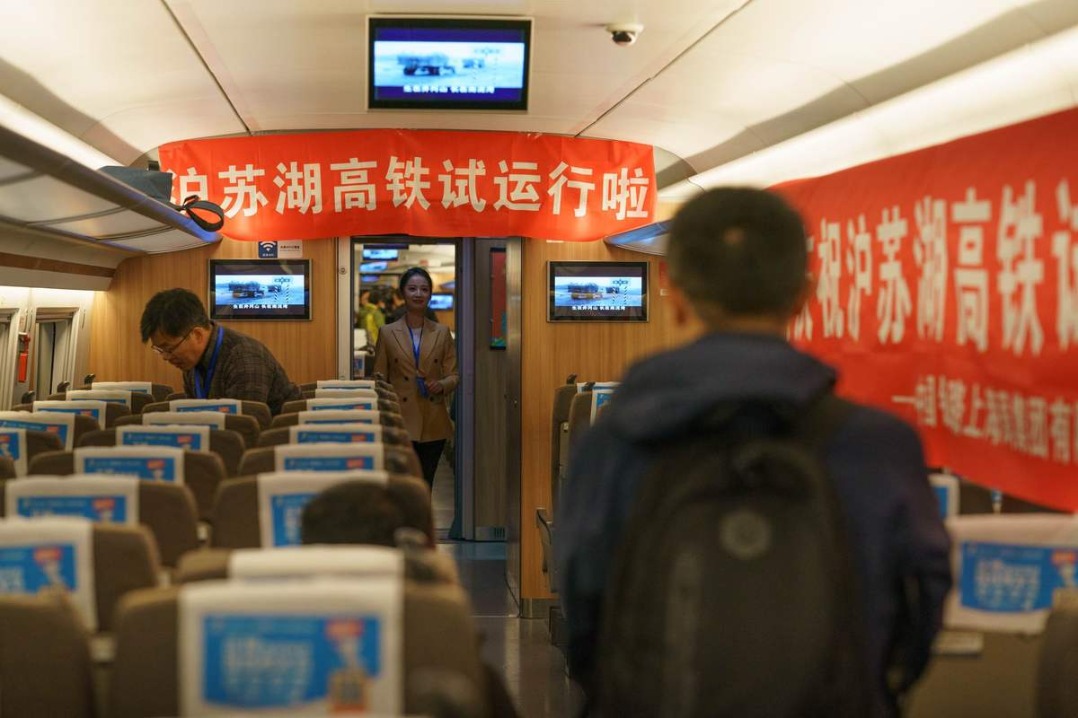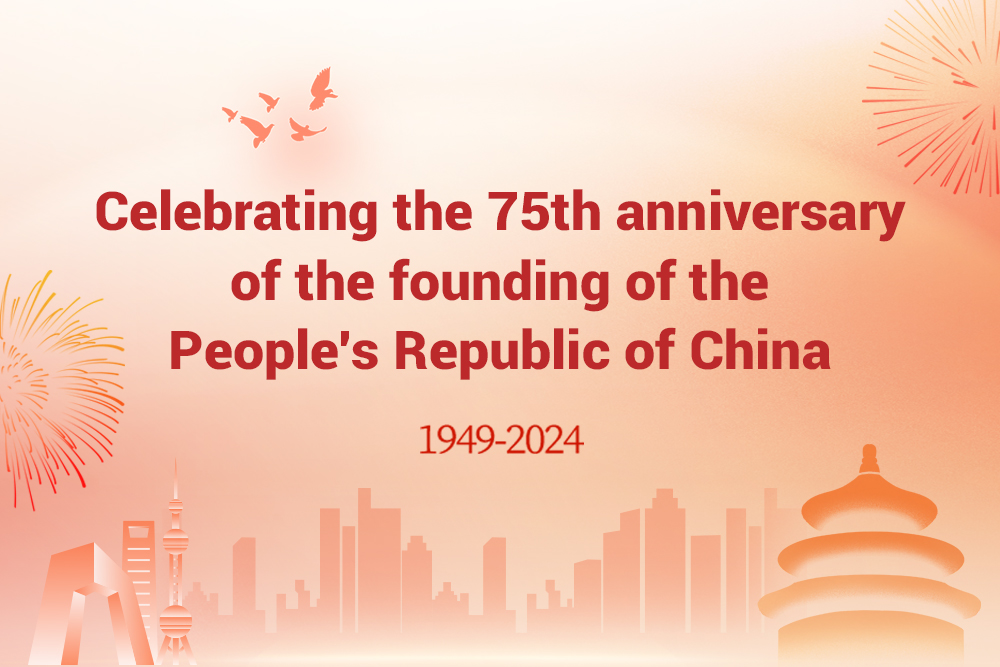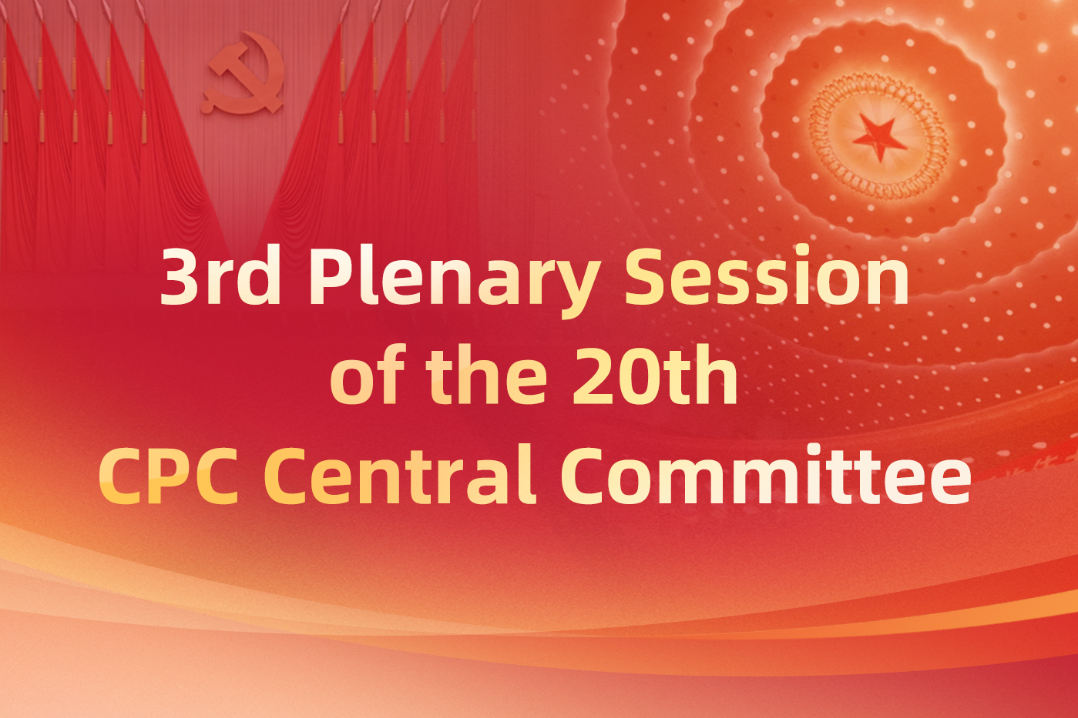Efforts to save water ramped up
Regulations aim to promote conservation, boost development


China has further intensified policy incentives and constraints to continuously promote water conservation and enhance water use efficiency across various sectors, according to a series of newly adopted regulations.
The State Council, China's Cabinet, recently issued the first national-level regulations on water conservation, which took effect on May 1, to shift from extensive to efficient and intensive water usage practices.
The regulations, comprising six chapters and 52 articles, introduced a rigid water resource constraint system and created a water conservation mechanism led by the government with cooperation from the public, market regulator and various parties.
The regulations require improved management of water use, the development of water-saving agriculture, the adoption of suitable water-saving technologies and enhanced guarantees through subsidies, incentive mechanisms and supervision in the evaluation of water-saving policies.
Zhang Yaobo, director of the Ministry of Justice's Fourth Bureau of Legislation, stressed that the regulations aim to promote water conservation across society, ensure national water security, advance the nation's goals to create an ecological civilization and drive high-quality development.
"The core focus of the regulations is to enhance rigid constraints on water resources, ensuring that population and urban and industrial development align with the capacity of water resources," Zhang said.
The regulations also aim to build a scientifically sound and comprehensive water-saving institutional system, aligning with existing laws such as the Water Law, the Yangtze River Protection Law and the Yellow River Protection Law to form a synergy for water conservation, he said.
Progress made
Li Liangsheng, vice-minister of water resources, noted that China faces a basic water scarcity challenge due to its large population and uneven water resource distribution. Although China ranks sixth globally in total water resources, its per capita water resources are only 35 percent of the world average, with nearly two-thirds of its cities experiencing water shortages. Water conservation is the fundamental solution to this scarcity.
Though China's GDP last year was double what it was in 2014, its total water consumption remained stable at around 610 billion cubic meters. Also last year, water consumption per unit of GDP and per unit of industrial added value decreased by 41.7 percent and 55.1 percent, respectively, compared to 2014.
However, challenges remain, including inefficient and wasteful water use and the need for improved water management, conservation measures, incentive policies and supervision, Li said.
In 2019, the National Development and Reform Commission and the Ministry of Water Resources issued the National Water Conservation Action Plan, setting control targets for national water consumption, water consumption per unit of GDP and water consumption per unit of industrial added value for 2022, with long-term goals for 2035. The targets were achieved by 2022.
"Progress has been made in agricultural, industrial and urban water-saving and loss reduction. For example, the water reuse rate in industries above a designated size has reached over 93 percent," Li said.
The Ministry of Water Resources, in collaboration with 20 other departments, has established an inter-ministerial coordination mechanism for water conservation, has implemented and improved water-saving tax incentive policies and has encouraged financial institutions to support water-saving projects, he said.
Urban use
Hu Zijian, head of the urban construction department of the Ministry of Housing and Urban-Rural Development, noted significant achievements in promoting water-saving cities and improving urban water use efficiency. A series of systems, including urban water-saving planning, planned water use, quota management and water-saving statistics, has been formulated.
A total of 145 national water-saving cities have been established, with urban wastewater reuse promoted, pilot projects for reclaimed water utilization carried out in 116 cities and a reuse rate of 29 percent.
In addition, "sponge city" construction — which emphasizes flood management through green infrastructure rather than just relying on drainage systems — has been promoted in 90 cities since 2015, achieving natural purification of rainwater and enhancing local rainwater resource utilization, he said.
Hu noted that many water-scarce cities have now adopted reclaimed water as a critical secondary water source. Apart from urban drainage and sewage treatment regulations issued in 2013, the new regulations also include provisions for wastewater reuse, providing legal support for the development of wastewater reuse.
Industry development
Niu Bo, an official from the NDRC, said the commission is continuously promoting the efficient and intensive use of water resources.
In September last year, the NDRC and multiple departments issued the "Opinions on Further Strengthening the Conservation and Intensive Use of Water Resources", outlining measures for enhancing water conservation in agriculture, industry, urban areas and ecological landscapes, promoting the use of unconventional water sources and developing the water-saving industry.
The industry focuses on manufacturing water conservation products, researching water-saving technologies, modifying conservation processes and providing water-saving consulting services. The NDRC is researching and formulating guidance on accelerating the development of the water-saving industry, he said.
Additionally, the NDRC considers the utilization of unconventional water sources as a vital measure for both conserving and augmenting water resources. Together with relevant departments, the NDRC has issued policies and guidelines to promote the resourceful use of wastewater, seawater desalination and the protection and utilization of mine water.
The NDRC, the Ministry of Housing and Urban-Rural Development and the Ministry of Water Resources are organizing a three-year action plan to enhance the use of reclaimed water in key cities, aiming to gradually increase the utilization rate of reclaimed water.
"We will also support the ongoing large-scale equipment upgrading and the trade-in program for consumer goods, encouraging the renewal of equipment in water conservation and water treatment fields, promoting the trade-in of key water-using products to continuously improve water use efficiency in industry, agriculture and urban living," he said.
yangzekun@chinadaily.com.cn
- Wuzhen hosts 2024 Yangtze River Delta Digital Development Conference
- Exhibition spotlights power of Chinese, French female scientists
- China's real-world medical data pilot project makes major progress
- Beijing braces for cold wave, rain, snow
- Hong Kong celebrates 100 days of locally born panda twins
- Chinese scientists discover impact crater on mountain ridge for first time




































